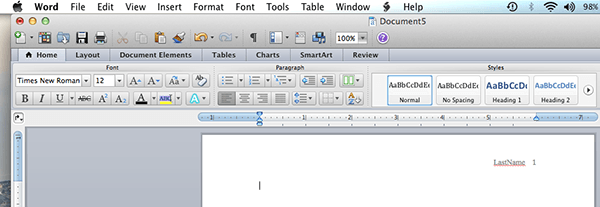Times Newer Roman is designed to add length to any academic paper that has page requirements and also requires the use of Times New Roman. Just download, install via fontBook or your preferred font management software, and swap to Times Newer Roman. Times Newer Roman is actually an altered version of Nimbus Roman No.9 L (1), a free and open-source font meant to mimic the size and look of the original Times New Roman typeface. The few minor changes that have been made are in pursuit of widening the letters and the spaces between letters without changing their vertical heights at all. This means that a paper of given word count will have more length when rendered in Times Newer Roman instead of the old Times New Roman—hopefully without being noticeable to whoever's job it is to grade the paper.
The x–height (2) of all lowercase letters has been increased by about 5% so that they sit wider at the same point size. Certain letters that can be widened easily, like the 'n', 'u', 'v', 'y', among others, have been edited manually. The size of punctuation has been increased by 15% across the board and the spaces around them increased proportionally.
Brevity is the soul of wit.
Times New Roman Pages Mac

Times New Roman Machine Embroidery Font
1 day ago A Roman Catholic diocese in New York has become the largest in the US to declare bankruptcy amid clergy abuse lawsuits October 1, 2020 GMT NEW YORK (AP) — A Roman Catholic diocese in New York has become the largest in the US to declare bankruptcy amid clergy abuse lawsuits. Times New Roman Cyr - free font download on AllFont.net. On this page you can download the font Times New Roman Cyr version Version 1.0 - November 1992, which belongs to the family Times New Roman Cyr (Regular tracing).
NYT Cooking is a subscription service of The New York Times. It is a digital cookbook and cooking guide alike, available on all platforms, that helps home cooks of every level discover, save and organize the world’s best recipes, while also helping them become better. Morison proposed an older Monotype typeface named Plantinas a basis for the design, and Times New Roman mostly matches Plantin's dimensions. The main change was that the contrast between strokes was enhanced to give a crisper image. The new design made its debut in The Timeson 3 October 1932.